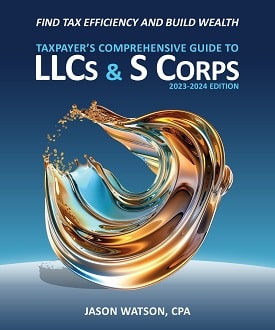Taking Shareholder Distributions
 By Jason Watson, CPA
By Jason Watson, CPA
Posted Friday, November 3, 2023
The IRS and Tax Court do not like to see you use your business as an ATM machine. This is not because you just said automated teller machine machine. This is because the spirit of a shareholder distribution is to be a return on investment, and if it is magically tied to personal living expenses it looks bad. Think of it this way- you wouldn’t call up Google and demand a dividend because baby needs new shoes, or the boat payment is due. Same thing here.
Another perspective- Apple shareholders are routinely upset because of the cash that Apple hoards. There are two ways to get a return on investment- capital appreciation (and subsequent sale) and dividends. If there are piles of cash and there aren’t immediate or mid-term needs for the cash, shouldn’t that be returned to investors who helped build the cash to begin with?
What do you do? One option is to take systematic shareholder distributions throughout the year, and flush out the remainder once a quarter or annually. Another option is simply distribute large chunks periodically without any cadence or basis that can be tied to personal living expenses. WCG prefers the first option. Looks clean. Defensible.
Sidebar: Lenders do not like to see a bunch of cash in your S corporation bank account. If you are looking to buy a house in the next six months, drain your business bank account down to the operational minimum. Lenders see $100,000 in the business account and they assume the business needs this. You roll up and say you are going to take it all out for a down payment. Now the sales prevention team (i.e., underwriting) thinks your business will suddenly fail which cuts off your ability to service your debt. Next thing you know we must write letters explaining that your business won’t fail because of this cash drain, and it becomes a big headache for everyone.
Here is another consideration. If you pile up money for a handful of years, and then flush it all out in one year, the relationship between income, reasonable shareholder salary and distributions will be unbalanced. Keep in mind that one of the criteria the IRS and the Tax Court use to test the reasonableness of a shareholder salary is the comparison between salaries and distributions. You don’t get rollover credits for all those years where you didn’t take out distributions, and while you can demonstrate the problem in support of your salary why have the conversation at all?
Bottomline- do not leave cash laying around in your business. Earmark it for future short-term purchase, put that money to use immediately, or put it in your personal savings account or retirement fund. Business owners routinely use their business checking account as a personal savings account. Bad. Don’t do it. Run your business like a business, and make sure retained cash has a purpose! Idle business cash has very little upside unless you have a capital expenditure or some other near-future use.
We recently had a client who had a particularly good year. For sake of discussion, let’s say the client had net business income (profit) of about $250,000 before a reasonable shareholder salary. He had a one-and-done project that boosted his net business income to over $800,000. His salary was $90,000, and remained unchanged, leaving about $710,000 in distributable cash (he didn’t have a Section 199A QBI optimization problem).
During our planning meetings, everyone felt uncomfortable distributing more than about $200,000. However, he didn’t want the remaining $510,000 to be idle as cash. Had he taken the full $710,000 out as a shareholder distribution, he was going to invest about $500,000 of it anyway. As such, the recommendation was to leave $510,000 in the business and invest this cash the same way he was planning, but in the name of the business. The plan will be to slowly redeem his investments and distribute this windfall over a handful of years (versus all at once). Same result. Much lower IRS risk.
A common question that is also asked is “If I take too much out, can I return some of the shareholder distribution back to the business?” Yes, you can. This is very common actually. Not elegant or ideal, but common. Things happen. No, this is a shareholder loan or additional paid in capital. It is a return of excess distributions. Keep it simple.
Wanna Talk About Your Small Business?
Please use the form below to tell us a little about yourself, and what you have going on with your small business or 1099 contractor gig. WCG CPAs & Advisors are small business CPAs, tax professionals and consultants, and we look forward to talking to you!




